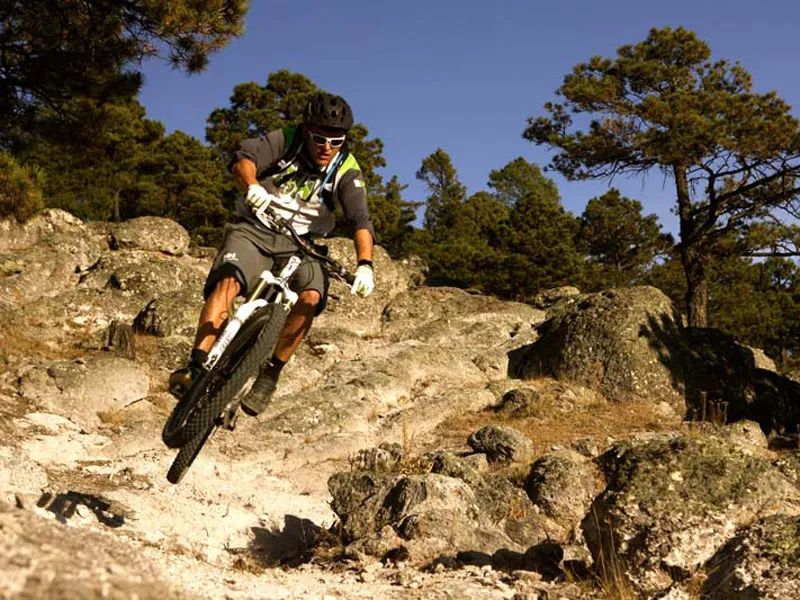Mexico's Barranca del Cobre is a long way from Trek's somewhat flat hometown in Wisconsin, and its gnarly, rock-infested trails are an equally far cry from Trek's roots in road bikes.
It's quite fitting - and a relief - then, to discover that Trek have fashioned themselves one of the best All-Mountain rigs we've ridden...
Out the saddle and topping up the revs at every opportunity, I ping down the single-track at a fair pace - certainly fast enough to end up in trouble should I cock-up. Flying over a blind summit and onto some slick rock, the tyres are tearing for grip and the saddle is beating me in the stomach - things are getting steep and I'm rapidly building up speed as I shoot on down this very fast chute.
With a bottom-out buzz, my Remedy G's-out in the transition and I catch myself grinning as I hear a distant chain slapping behind me. My chapped grin soon turns to grimace though, as what comes down must get back up, and at over 8000ft, the air's thin and there's a cloud of dust even a Dyson would have trouble sucking up.
Flying halfway round the world to sample the latest mountain biking kit is just one of the things we revel in here at Bikeradar. Most launches involve riding some alpine terrain on a belly full of exquisite grub, on a pre-production bike that's normally far too small. But Trek don't do things like that; they want us hacks to spend as much time as possible on the bikes, in this case their brand new 6in travel platform.
There are four main talking points when it comes to the Remedy; the E2 head-tube system; Evo mono-link; full floating suspension design and the ABP- or active braking pivot. These, combined with a light, but torsionally rigid frame and good geometry promise a lot on paper-but how will they fare out on the trail?
Big Mountain
Now partnered with Trek, Big Mountain adventures were our hosts for the trip and given their impressive repertoire of tours - Switzerland; British Columbia; Morocco; Italy; Costa Rica; South Africa and Botswana - we knew we were in for a treat. A quick Google search added more fuel to the fire when we realised our base level was 8000ft and surrounding us was some of nature's most unique terrain; the Barranca del Cobre - or Copper Canyon - itself covers more than 20,000 squares miles and although made up of 6 separate canyon systems, could swallow the Grand Canyon.
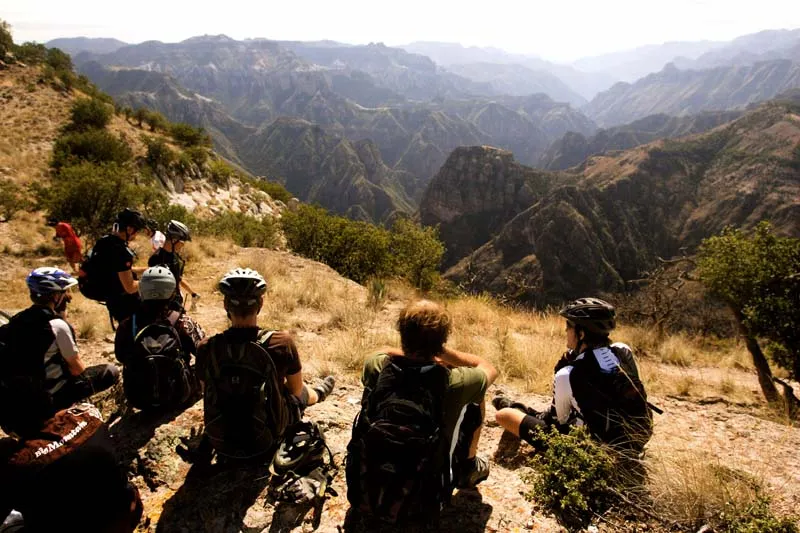
Not a bad view really. Copper Canyon.
The surrounding terrain is made up of rocky riverbeds, off-camber shale, slick-rock and hair-raising single-track along ravine edges. Big Mountain tours are fronted by Chris Winter, a man with a passion for travelling and riding. Chris believes in using the excellent local riders in addition to his panel of amazing guides to provide both culture and area knowledge, as well hard riding and a learning experience for all that attend. Arturo Gutierrez was our local guide in the town of Creel and the guy is a machine. Up, down and along, he's a powerhouse and a fantastic source of information about the region. And his partner's Welsh too.
Sliding on Marbles
The trails here are all immensely dry and firm, and are coated with a fine layer of dust and trail 'grain'. All this translates to bugger all traction in the turns - when you push the bike into a corner with any sort of force, you simply wash out. So riding here involves a lot of sliding and unfortunately the Bontrager Jones ACX tyres really didn't help. Their thin carcasses punctured easily on the sharp and arid terrain - there were nearly 20 flats on one ride - and the tall knobbles squirmed on the hard surfaces, not offering the most confidence inspiring grip on the alien terrain. Still, tyres are one of the first things people change on a bike - every region benefits from a different tyre, so I won't bore you like some of the other press no doubt will.
However, most of the rest of the spec suits the bike and allows a sub 29lb total weight, which for a 6in travel trail bike is very good. My top-specced Remedy 9 was dripping with nice kit; a Bontrager Rhythm Elite Wheel set, SRAM X-0 rear mech and shifters with a Shimano XT drive train and Avid Juicy Carbon brakes- running 203 and 185mm discs. A brilliant Fox RP23 XV shock and the simple Fox 36 Float RC2 forks were on shock absorption duties.
The only niggle spec-wise was the handlebar; a 26in wide Bontrager Race Lite bar. It's far too narrow for this type of bike. A 6in travel bike is capable of going a lot faster through technical, steep and dangerous terrain, so a wider bar is warranted to offer extra control. At the very least, the bigger sizes should have a bar width that reflects the rider size - big guys need big bikes, and big bars...
Cruising on rails
The first thing I noticed - in between gulping on air, dust and scorpion cack - was how smooth and effortless the ride felt. The cockpit didn't feel cramped, neither did it feel too long for gravity-fuelled antics.
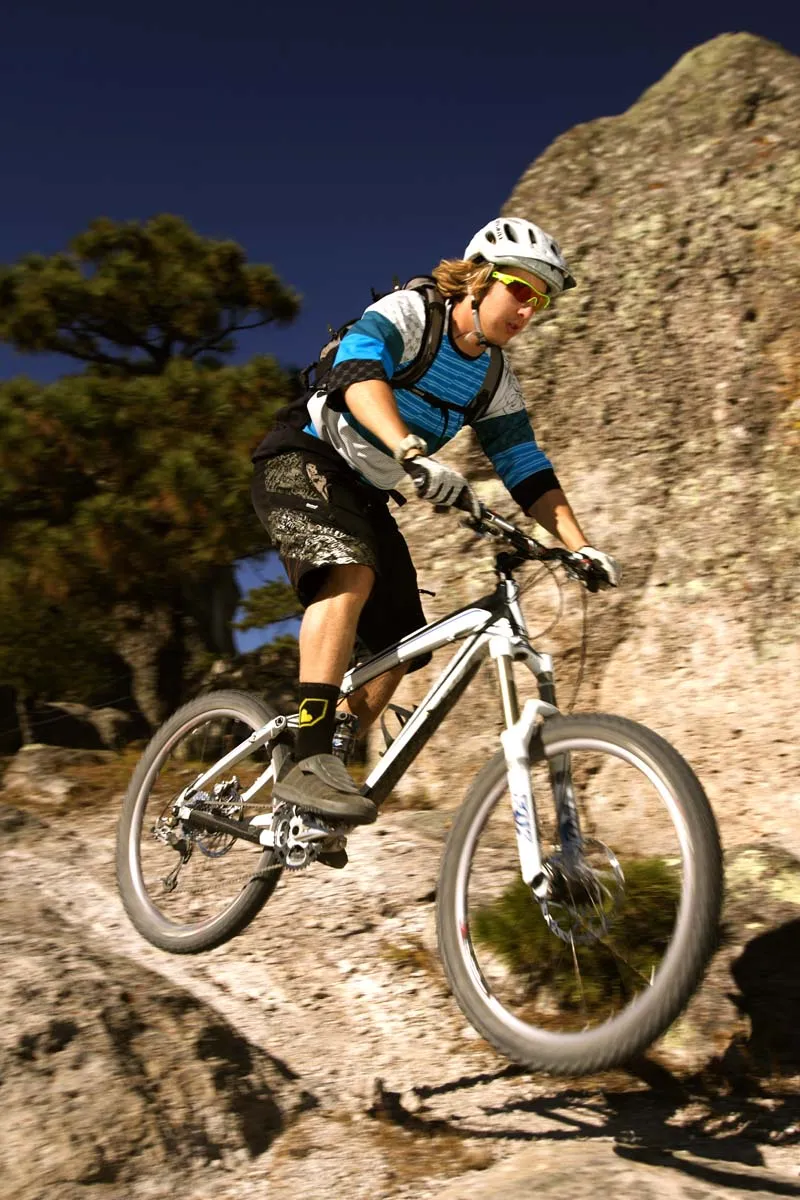
Your humble scribe engages autopilot over a slickrock section
The light wheels and tyres made for quick acceleration, and trusty old SRAM allowed you to bang through the gears without worry of a mis-shift. A technicalpresentation told us how efficient the rear suspension was, and that the shock's action was maximised with a combination of the ABP and the Evo-link. Maybe so, but on unfamiliar terrain it's really hard to notice these things until you've been riding and have acclimatised to the area.
What I did notice immediately was how supple the rear end was - on several occasions I questioned whether my shock was leaking, or if I had enough air in it. But it was always spot-on - the rear end really is very supple. This supple travel isn't wasted on the uphill stuff - I didn't even bother with the Pro-pedal as the combination of the pivot point, rocker position and ABP kept the bike stable under rider induced movement, yet supple throughout pedalling. I can't comment on how well the ABP system works under braking as we really weren't on the brakes enough on the trails here - but what I can say is how much I didn't notice the system, which certainly isn't a bad thing.
The bottom bracket did feel a little higher than other bikes around at the moment, but we really only noticed this when banging through rocky sections pedalling where we may normally have clobbered our feet on several occasions.
Finally, the impressive E2 system allows a 1.5 steerer tube at the bottom of the head tube, which then tapers into a 11/8th steerer tube up top. This allows the stiffness of 1.5 where it counts, and the lightweight of the regular size up top. The wide range of 11/8th stems available make this choice better still.
Again, we didn't notice a performance difference on the dusty Mexican trails - we'd have to spend considerable trail time on the bike against a regular system to tell - but better braking will clearly be a big benefit as fore and aft flex in the fork is reduced, allowing braking force to go directly to the wheel.
Home turf
Getting a Remedy on UK trails will be the dead-cert way of telling how good this rig will be, but already we're salivating at the thought of hitting Afan's Whyte's Level on board one.
Our initial impressions of the Remedy are brilliant- it looks to be a very sorted trail bike for the UK. It certainly looks like the 6in market has a new player- it's light enough to thrash round the UK's trail centres, and promises to be burly enough for a lot more. >What's more is that the appearance of the bike won't put off trail riders looking for a bit more - some 6in bikes scream 'Freeride', whereas the Trek merely mumbles 'ride me' from a distance. It's when you get up close that it screams 'thrash me'...
The details
Headtube
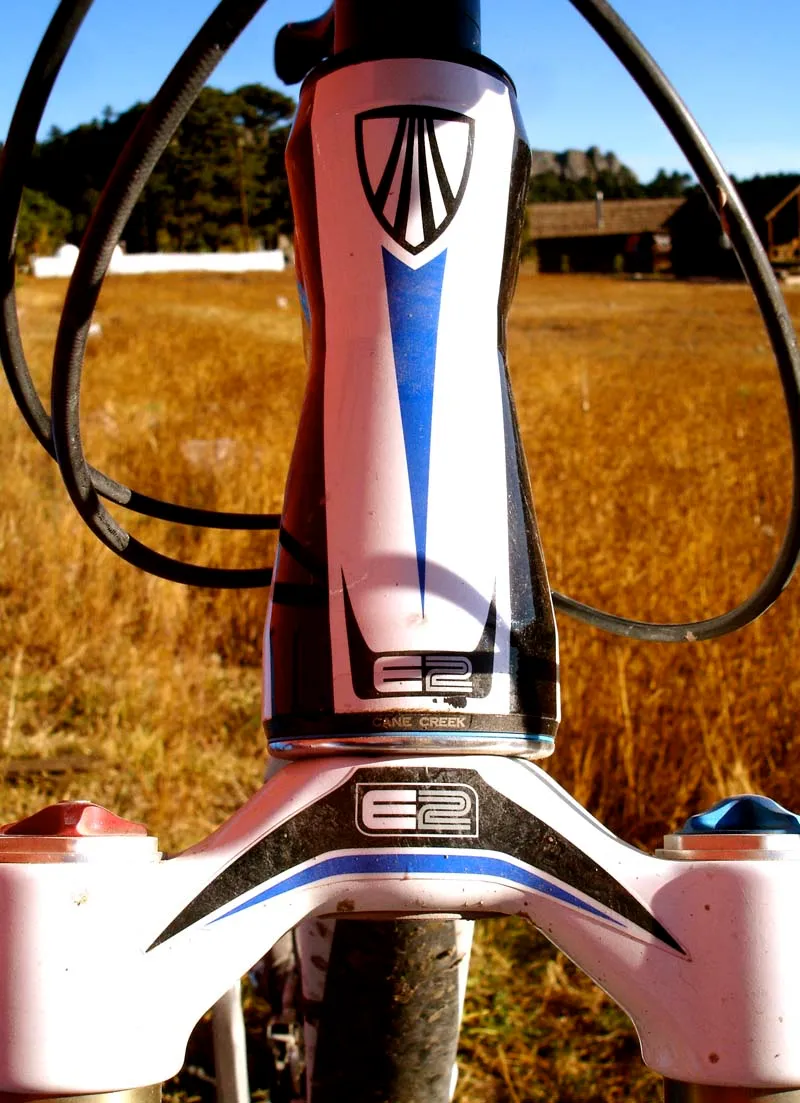
The E2 head tube system uses a regular 11/8th upper race, and a 1.5 lower race. This gives the fork stability under heavy braking whilst allowing it to remain light enough for an All-Mountain application. Other than the obvious strength traits, there is a huge range of All-Mountain 11/8th stems out there. 1.5 would have been overkill on this rig.
Evo Link
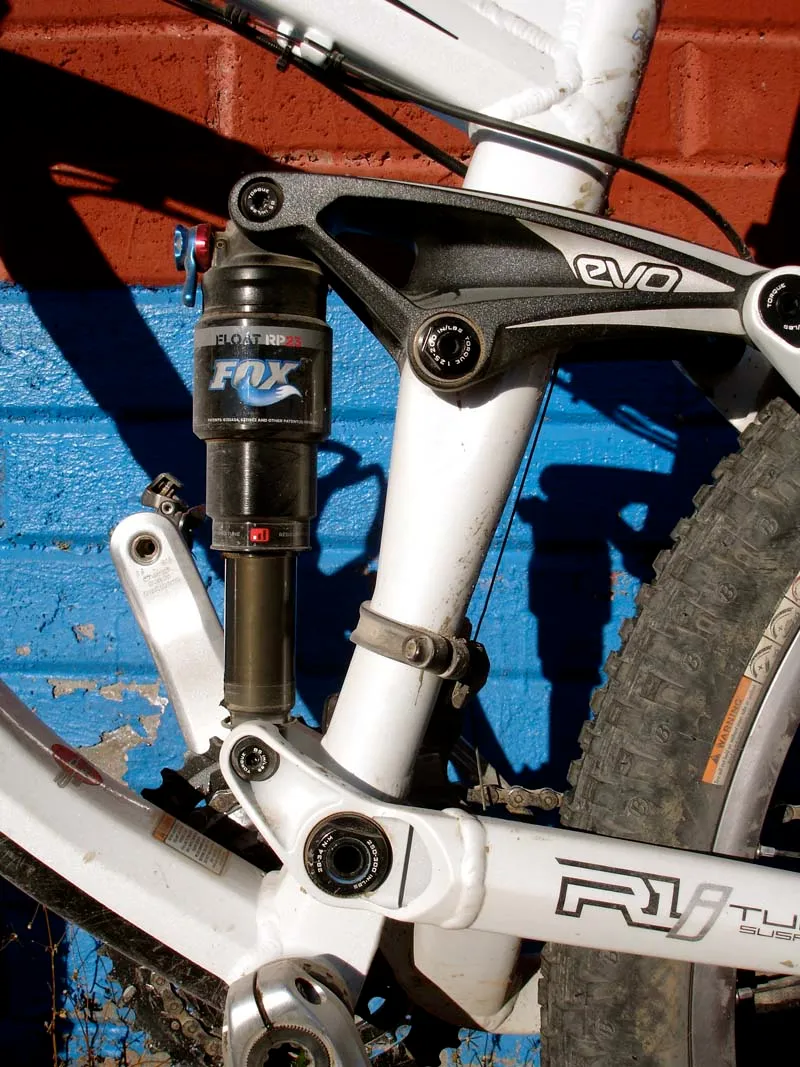
The Evo Link is a one piece rocker- being a single piece increases rigidity and allows Trek to keep the weight down on what could other wise be a hefty rocker. The clean lines add to the frame's overall smooth look.
Active Braking Pivot
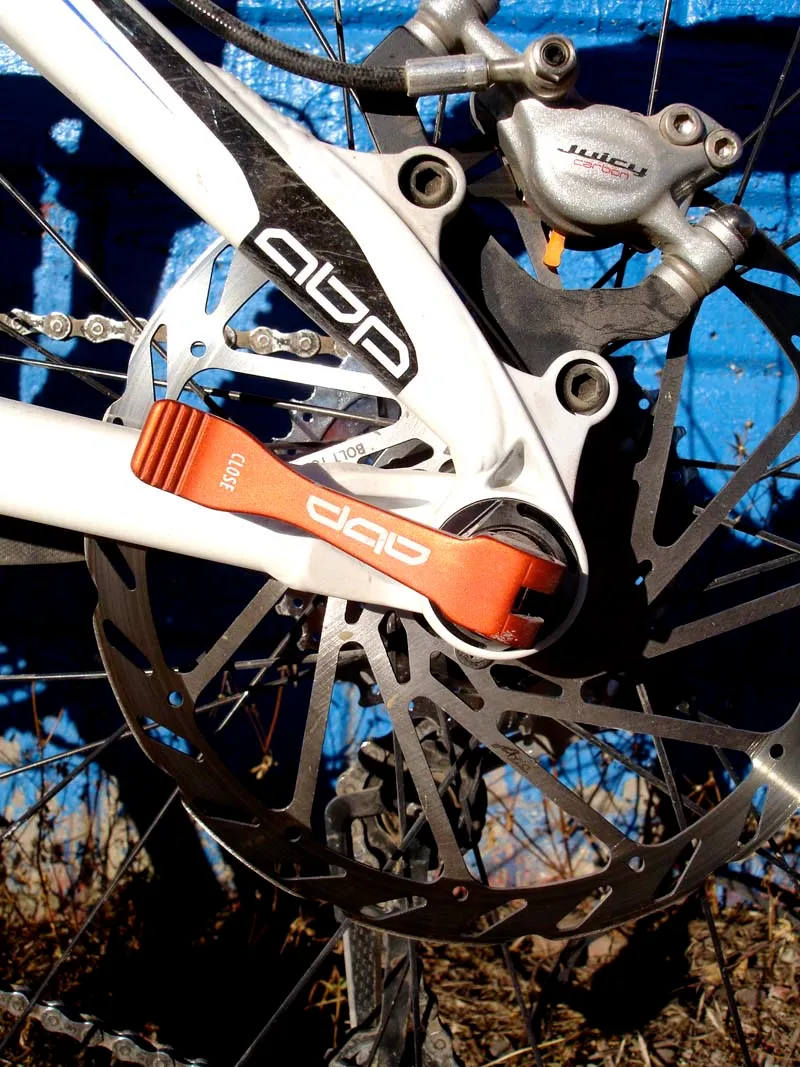
The ABP is designed to offer the least amount of caliper movement under braking. To try the effect of the caliper moving, nudge your front wheel on a wall, put the back brake on and compress the rear suspension. Note how it feels hard, now try without the brake on - you'll find the movement is unhindered. Trek's ABP offers the least amount of movement on the market which also means the least amount of brake jack...
Full floater
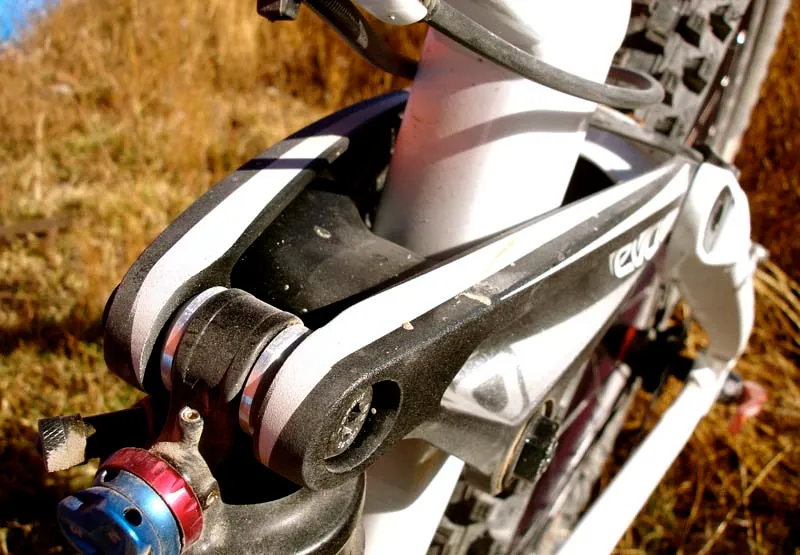
The full floating rear end floats the shock between the rocker and the rear chain stays. This format allows a better leverage ratio that compeiments the Fox RP23- and the effect is a linear feel throughout the travel. This correlates to a bump swallowing ride on the trail that's supple on the small stuff, and plush and controlled on the big stuff.
For more of Sterling Lorence's excellent photo's of the Remedy launch go to the Trek Remedy launch part 2 page >
Stop Press!
MBUK will have one of the first samples in the country- and they'll be givng the full low-down here on Bikeradar as soon as it lands in the UK. Watch this space...
Details
Remedy 7 £1800
Shimano LX/XT mix, Rockshox Lyrik Solo Air, Fox RP2 XV shock. Bontrager Rhythm wheelset.
Remedy 8 £2200
Shimano XT, Rockshox Lyrik 2-Step, Fox RP23 XV. Bontrager Rhythm Comp wheelset.
Remedy 9 £2500
Shimano XT and SRAM X-0, Fox 36 Float RC2, Fox RP23 XV. Bontrager Rhythm Elite wheelset. >
